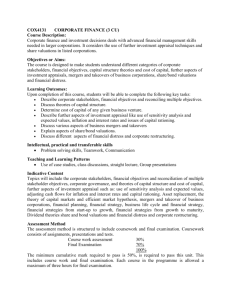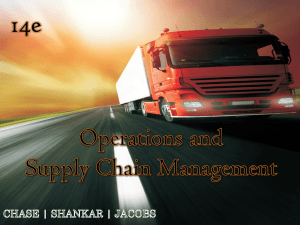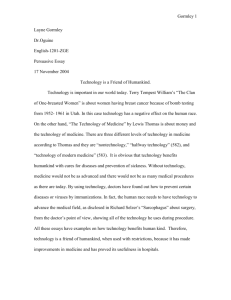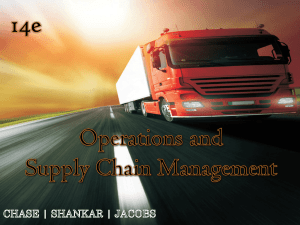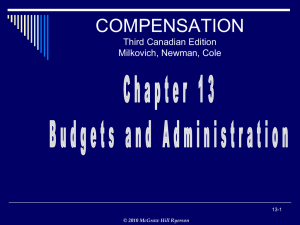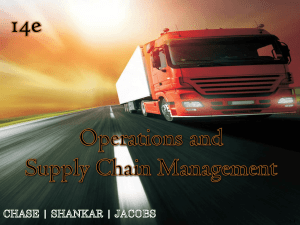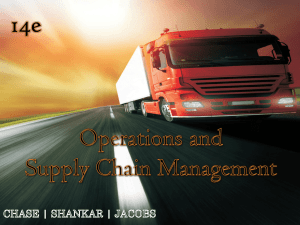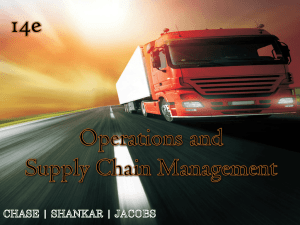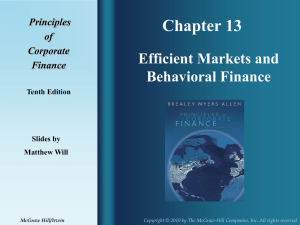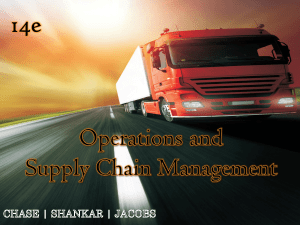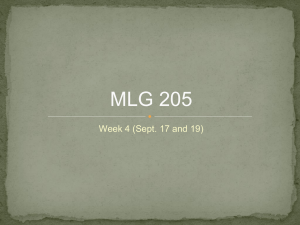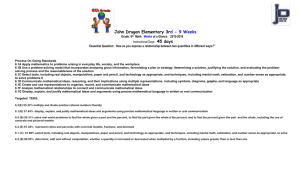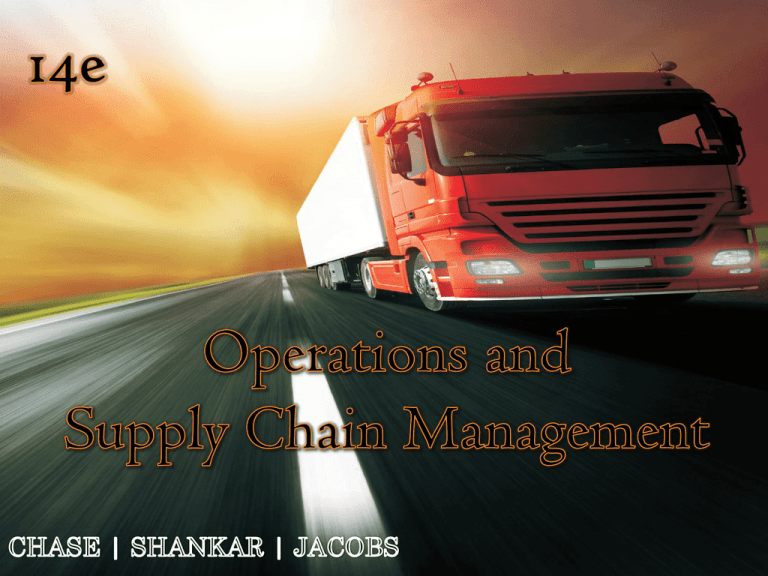
2–1
Chapter Two
McGraw-Hill/Irwin
Copyright © 2014 by The McGraw-Hill Companies, Inc. All rights reserved.
2–2
Copyright © 2014 by McGraw Hill Education (India) Private Limited. All rights reserved.
• LO2–1: Know what a sustainable business
strategy is and how it relates to operations and
supply chain management.
• LO2–2: Define operations and supply chain
strategy.
• LO2–3: Explain how operations and supply
chain strategies are implemented.
• LO2–4: Understand why strategies have
implications relative to business risk.
• LO2–5: Evaluate productivity in operations and
supply chain management.
2–3
2–4
Copyright © 2014 by McGraw Hill Education (India) Private Limited. All rights reserved.
– Sustaining our Planet—Keep our impact on the
planet small, even as we grow.
– Sustaining our Community—Be good neighbors.
Give back to the community.
– Sustaining our People— Create an environment
where people can live life to the fullest, even from 9
to 5.
– Sustaining our Business—Grow slower, grow
better, and stick around longer.
– Sustaining our Brands—Make what people actually
need. Never compromise quality.
Copyright © 2014 by McGraw Hill Education (India) Private Limited. All rights reserved.
• Cliff Bar’s Aspirations (an example)
2–5
– Shareholders – individuals or companies that legally
own one or more shares of stock in the company
– Stakeholders – individuals or organizations who are
directly or indirectly influenced by the actions of the
firm
• Adding a sustainability requirement means meeting
value goals without compromising the ability of
future generations to meet their own needs
• Triple bottom line – evaluating the firm against
social, economic, and environmental criteria
Copyright © 2014 by McGraw Hill Education (India) Private Limited. All rights reserved.
• The firm’s strategy describes how it will create and
sustain value for its current shareholders
2-6
2–6
2–7
Copyright © 2014 by McGraw Hill Education (India) Private Limited. All rights reserved.
– Corporate strategy provides overall
direction and coordinates operational goals
with those of the larger organization
• Operations effectiveness – performing
activities in a manner that best
implements strategic priorities at a
minimum cost
Copyright © 2014 by McGraw Hill Education (India) Private Limited. All rights reserved.
• Setting broad policies and plans for
using the resources of a firm – must be
integrated with corporate strategy
2–8
2–9
Copyright © 2014 by McGraw Hill Education (India) Private Limited. All rights reserved.
•Make the product or deliver the service cheap
Quality
•Make a great product or delivery a great service
Delivery Speed
•Make the product or deliver the service quickly
Delivery Reliability
•Deliver it when promised
Copyright © 2014 by McGraw Hill Education (India) Private Limited. All rights reserved.
Price
Coping with Changes in Demand
•Change its volume
Flexibility and New-Product Introduction Speed
•Change it
2–10
Copyright © 2014 by McGraw Hill Education (India) Private Limited. All rights reserved.
• Management must decide which parameters of
performance are critical and concentrate
resources on those characteristics
• For example, a firm that is focused on low-cost
production may not be capable of quickly
introducing new products
• Straddling – seeking to match a successful
competitor by adding features, services, or
technology to existing activities
– Often a risky strategy
2–11
– Features customers will not forego
• Order winners are criteria used by
customers to differentiate the products and
services of one firm from those of other
firms
Copyright © 2014 by McGraw Hill Education (India) Private Limited. All rights reserved.
• Order qualifiers are those dimensions that
are necessary for a firm’s products to be
considered for purchase by customers
– Features that customers use to determine
which product to ultimately purchase
2–12
2–13
Copyright © 2014 by McGraw Hill Education (India) Private Limited. All rights reserved.
Copyright © 2014 by McGraw Hill Education (India) Private Limited. All rights reserved.
• Japanese Tsunami (March 2011).
• In 1996 General Motors experienced an 18day labor strike at a brake supplier factory.
• This strike idled workers at 26 assembly
plants and led to an estimated $900 million
reduction in earnings.
• In 1997 a Boeing supplier’s failure to
deliver two critical parts led to a loss of
$2.6 billion.
2–14
– Uncertainty in the environment causes supply
chain planners to evaluate the relative riskiness of
their strategies
• Supply chain risk is the likelihood of a
disruption that would impact the ability of a
company to continuously supply products or
services
Copyright © 2014 by McGraw Hill Education (India) Private Limited. All rights reserved.
• All strategies have an inherent level of risk
– Supply chain coordination risks are associated with
the day-to-day management of the supply chain
– Disruption risks are caused by natural or manmade
disasters
2–15
– Focus on highly unlikely events that would cause a significant
disruption to normal operations.
• Assess the potential impact of the risk. Here the goal is to
quantify the probability and the potential impact of the risk.
– Could be based on financial impact, environmental impact,
ongoing business viability,
– Brand image/reputation, potential human lives, and so on.
Copyright © 2014 by McGraw Hill Education (India) Private Limited. All rights reserved.
• Identify the sources of potential disruptions and assess a
type of vulnerability.
• Develop plans to mitigate the risk. A detailed strategy for
minimizing the impact of the risk could take many different
forms, depending on the nature of the problem.
2–16
2–17
Copyright © 2014 by McGraw Hill Education (India) Private Limited. All rights reserved.
– Must be compared to something else to be
meaningful
Operations can be compared to each other
Firms can be compared to other firms
• Partial productivity measures compare output
to a single input
• Multifactor productivity measures compare
output to a group of inputs
• Total productivity measures compare output to
all inputs
Copyright © 2014 by McGraw Hill Education (India) Private Limited. All rights reserved.
• Productivity is a measure of how well resources
are used
• Productivity =
• Productivity is a relative measure
2–18
2–19
Copyright © 2014 by McGraw Hill Education (India) Private Limited. All rights reserved.

